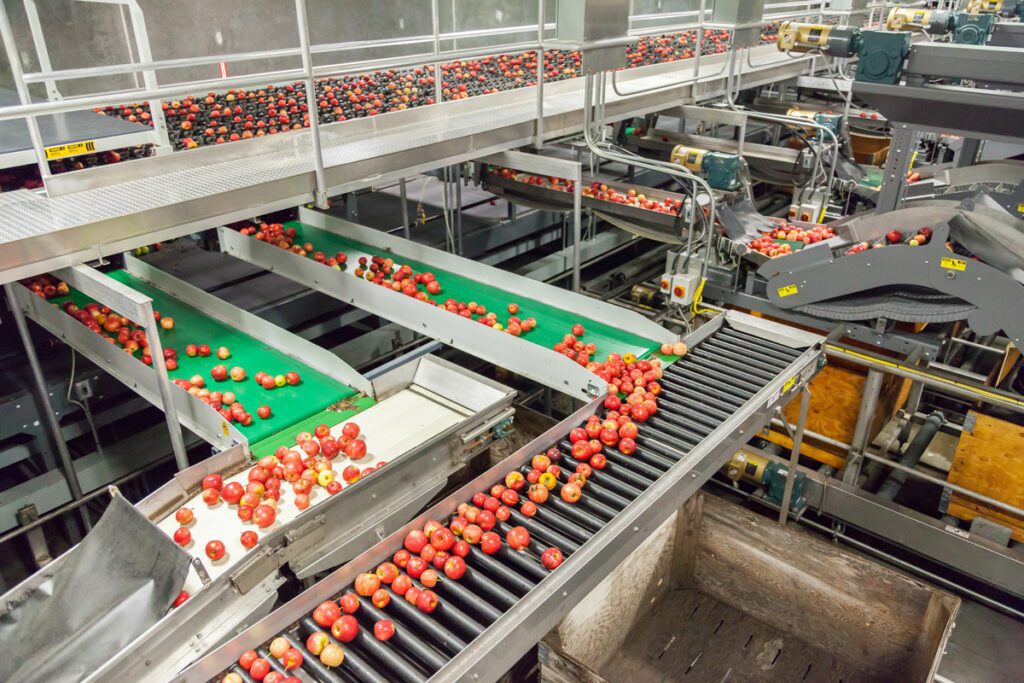You manufacture a food product and the sales have been good. You are outgrowing the commercial kitchen. Your inbox is full of inquiries out of your province/state. You may need to ship your products to the USA, Asia, or Europe. It may be time to rent space and build a new food processing plant.
Setting up a new plant can be tricky. There are many things to consider such as how big the facility needs to be, how many amps are required to power your equipment, and how many people will you need to hire? Food premises must be compliant with Hazard Analysis and Critical Control Point (HACCP) and Good Manufacturing Practices (GMP) standards. See reference section regarding food safety requirements (SFCR, FSEP, cGMP/FDA Preventive Controls, GFSI-SQF – Module 11 for Food Manufacturing).
Important Considerations When Designing Your Floor Plan
After setting up multiple plants, I have prepared some tips for you and hopefully, you will find them helpful in navigating through this challenge.
First things first, you need a schematic, namely, a floor plan. Important dimensions to keep in mind, a pallet is 40”x48” and a load is approximately 56” high. To access the load, you need a forklift which requires 10 ft to maneuver. A worker needs at least 3’x3’ to work, and a minimum 3’ wide clearance to walk around.
You will need a washroom for every 10 employees, a break room, a changing area with lockers, and dry storage for your packaging materials. You may require a cooler or a freezer, or maybe both. You will need a spacious loading dock, maybe equipped with a desk, a phone, and a computer. There are a LOT of details, how do you put these things together and plan an effective floor plan?
Set Final Workflow
The best place to start is to create a workflow from receiving raw materials to shipping the finished products. The idea is to keep the traffic of materials and employees travel in a single direction and to minimize back flow and cross-sections, as those can introduce cross-contamination. Very often, the final flow turns out to be a “U” shape or a straight line with receiving at one end and shipping at the other.
Loading docks are one of the most important areas of a facility, as it connects the internal environment of the food facility to the outside. The main concern here is the entry of pests, such as rodents and flies. You will want to make sure the docks are properly sealed and levelers brushed. It is also important to ensure that the docking area will not be directly opened to the processing environment.
Plan For Storage Needs
Another important element related to loading docks is pallet storage. Empty pallets can take up a lot of space and will provide harborage to pests if not being stored properly. It may not be a bad idea to design some overhead racking over the docks, or a covered and lockable external shed away from the wall.
While on the topic of storage, I would like to elaborate a little bit on this topic. Storage space is always a luxury in any food facility. There are so many different categories of items that require storage.
Food storage is, of course, essential. Depending on the nature of the product, a facility may need dry storage, a cooler, a freezer or a combination of these. Racking will likely be needed in the food storage. When designing the racking system, make sure that adequate space is left behind the rack for inspection and cleaning. We recommend 12” of clearance to perform pest control inspections and 6” below the bottom rack for sanitation purposes. You will also want to access refrigeration units in walk-in coolers and freezers. Collection pans must be in place to collect dripping condensate from refrigeration units with trays piped to drain to prevent cross-contamination. This is essential since the dripping condensation can pose a Listeria contamination risk.
Packaging Materials, Chemicals, & Tools
Other than food, packaging material is another category of items that requires building specifications. The packaging material storage area should be easily accessible from the processing areas while being kept dry, clean, and free from contaminants.
Next on the list is the storage of chemicals, such as sanitizer, detergents, lubricants, etc. Chemicals need to be restricted to authorized personnel only and kept away from the processing areas. Along with cleaning chemicals, you will need storage for cleaning tools (shop vacs, mop buckets, brushes, squeegees, etc.) and personnel protection equipment. It may be useful to identify a designated area (custodian storage with water access) to keep these items in one place.
Another category of items that tend to be overlooked is the maintenance of tools, spare parts, and obsolete equipment. How about consumables such as gloves, hairnets, toilet paper, etc.? Make sure all necessities are considered when designing the floor plan.
Infrastructural Planning
Once the building schematic is created, we need to lay out the utilities, water lines, power lines, compressed air, and also internet ports. The locations of sinks need to be designed in the early stages. Hand sinks should be provided near the employee entrance and at key processing stations. Cleaning sinks on the other hand need to be kept away from processing. Hand sinks should be hands-free (knee or foot-operated) and hot water should be available in 30 seconds. Hoses need to be properly racked and kept off the floor. All water outlets need to be equipped with backflow preventers.
When setting up the water lines, it is important to locate the drains and grease traps as well. The floor needs to be properly sloped to ensure proper drainage. It is recommended to do a water drainage test before putting on any coating on the floor. Floor coatings need to go over the drain edges to prevent water from getting between the drain and the concrete. Make sure the drain covers can be easily removed without breaking the floor coating for cleaning purposes. In coolers, drains must be easily accessible for cleaning as they can harbour pathogens such as Listeria.
Water & Ventilation Precautions
In a food facility, trapped water can introduce significant biological hazards. Therefore, we design facilities to minimize this risk, such as using epoxy-coated floors with curved edges, using fiberglass panel walls to cover dry walls, using full wielding instead of point wielding in metal structures, etc. Avoid the use of wood, foam, cloth, ropes, or any other materials that will trap water in the processing areas. As per GMP requirements, surfaces must be cleanable, non-porous, and smooth.
Ventilation is another important element to reduce environmental microbiological hazards. Adequate ventilation prevents the risk of condensation and bacterial contamination. Air intakes must be properly screened. Air filters must be inspected and cleaned regularly.
Signage
Once the building schematic is finalised, it’s time to put up signage. To make sure Good Manufacturing Practices (GMP) are followed, GMP signs, such as hand washing signs, allergens, colour coding, and access control signs, shall be posted wherever applicable. Refer to the SQF 9 Code Food Manufacturing standard to learn more about signage requirements.
Building a food facility is a challenging project. There are many factors to consider, and I hope you find the information in this article helpful.
Sirocco Consulting provides on-site or remote consulting services to help with food safety compliance such as GMP, HACCP, and GFSI/SQF. Contact us for a free consultation.
References
Safe Food for Canadians – Preventive Controls





